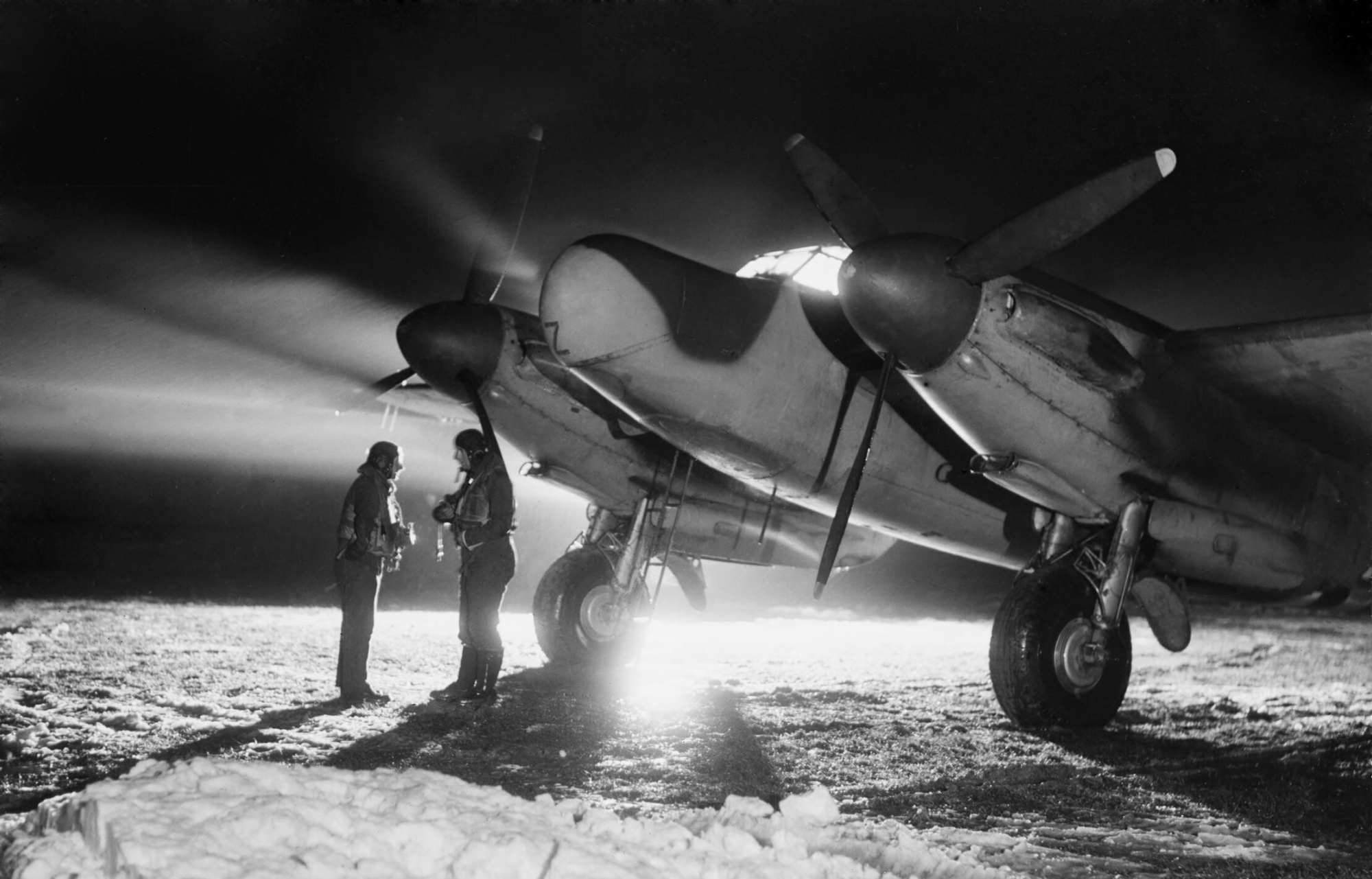Operation Steinbock - the ‘Baby Blitz’ January 1944
Header Image: RAF Mosquito night-fighters were an essential element of the British defences against the German bombing raids of Operation Steinbock in early 1944.
Eighty years ago, in January 1944, the German Luftwaffe began an air campaign of bombing raids against London and other cities in England, which was to be the largest since the ‘Blitz’ of 1940-41. Named Operation Steinbock by the Germans, it was to be the final large-scale campaign of manned-aircraft bombing raids against England. The German high command ordered this bombing offensive as a reprisal for the increasingly effective Allied combined bomber offensive against German cities and the attendant decrease in the morale of its civilian population.

The German bomber force for Operation Steinbock included the new, but much-troubled, Heinkel He 177 which tended to suffer from engine failures and fires.
The Luftwaffe assembled over 500 bombers for the campaign, some withdrawn from Italy. These were mainly Junkers Ju 88s, Junkers Ju 188s and Dornier Do 217s, along with 30 of the large, new and troubled Heinkel He 177s. There were also 20 of the fast twin-engine Messerschmitt Me 410s “Schnellbombers” and 25 Focke-Wulf Fw 190s. The raids were to employ Pathfinder target marking techniques with the use of electronic navigation aids.

Opposing the German attacks and defending the British airspace was a modern and effective night fighting force, now under the command of Air Defence of Great Britain (ADGB), the new and temporary name for RAF Fighter Command. The Ground Control Interception (GCI) radars were much improved from earlier in the war and could track targets overland as well as over the sea, with accurate height-finding capability. Sixteen squadrons of RAF night-fighters were available, 13 equipped with DH Mosquitos – mostly the Mk XII – and three with Bristol Beaufighter VIF. These twin-engine night-fighters carried the latest air intercept (AI) radars, they were fast, heavily armed, and often flown by experienced crews. In addition, Anti-Aircraft Command had over 2,700 anti-aircraft guns, with many of the 3.7-inch and 4.5-inch gun batteries equipped with IFF and gun-laying radar, providing accurate barrages even at night or through cloud cover. These were backed up by hundreds of searchlights.

Operation Steinbock was originally planned to begin over the 1943 Christmas period but was delayed until the New Year, not least by bad weather. Before the operation was fully initiated, the Luftwaffe was in action on night bombing operations over Britain on 2nd/3rd, 4/5th and 13-15th January 1944, with Me 410s, Fw 190s and some Ju 188s. The bombing was scattered and ineffective, although 10 adult civilians and six children were killed in these raids and more than 30 civilians were injured. The intruders suffered for their efforts with 11 of their aircraft failing to return to their bases, several of them falling to the RAF night-fighters. One of the Me 410s shot down on 2nd January was claimed by the famous, high-scoring RAF night-fighter pilot Wing Commander John “Cats Eyes” Cunningham DSO and two Bars, DFC and Bar (OC 85 Squadron) with his radar operator Flight Lieutenant Jimmy Rawnsley DSO DFC DFM and Bar, in their Mosquito Mk XII. This was Cunningham’s final victory, bringing his total score to 20 kills all, with the exception of one, being obtained at night, and leading to the award of a second Bar to his DSO.

The first attack of Operation Steinbock was launched against London, in two waves, on the night of 21st/22nd January 1944. The first wave consisted of an estimated 230 German bombers and the second wave, later the same night, had 220. Although some bombs fell on the capital, many of the bombers failed to reach their targets and the bombing was generally scattered, but some damage was caused to essential infrastructure and 74 civilians were killed. The Luftwaffe lost 36 bombers with their crews that night, several of them falling to RAF night-fighters. One of those was a Heinkel He 177 which was shot down by a 151 Squadron Mosquito Mk XII, flown by Warrant Officer Kemp RNZAF and Flight Sergeant Maidment. The He 177 crashed near Haslemere, the first of its type to fall on British soil.
Further large-scale German night bombing raids continued into May 1944, mostly against London, but also against Hull, Bristol and other targets, with a total of 19 attacks carried out. Total civilian casualties in Britain from these air raids amounted to around 1,500 killed and 2,900 seriously injured, nearly all of them Londoners. Grievous as this was, it scarcely compared with the more than 41,000 killed and over 48,000 injured during the ‘Blitz’ of 1940-41, hence this period being dubbed the “Baby Blitz” by the British.
The bombing was largely ineffective and the Luftwaffe lost 329 aircraft during the campaign along with hundreds of its aircrew, many of whom were amongst its most experienced aviators. The majority were shot down by RAF night-fighters, and others by the anti-aircraft guns. Overall, the losses amounted to 63 percent of the German aircraft committed to Operation Steinbock, at an average rate of 77 aircraft lost each month. This was simply unsustainable and the bombing campaign ended in May 1944. Worse still for the Germans was the fact that the Luftwaffe bomber force was now so sadly depleted that it could do little to interfere with the growing concentrations of troops, equipment and shipping massing on the English south coast for the forthcoming invasion of France. Nor, when D-Day came on 6th June 1944, could it do much to resist the Allied invasion.








